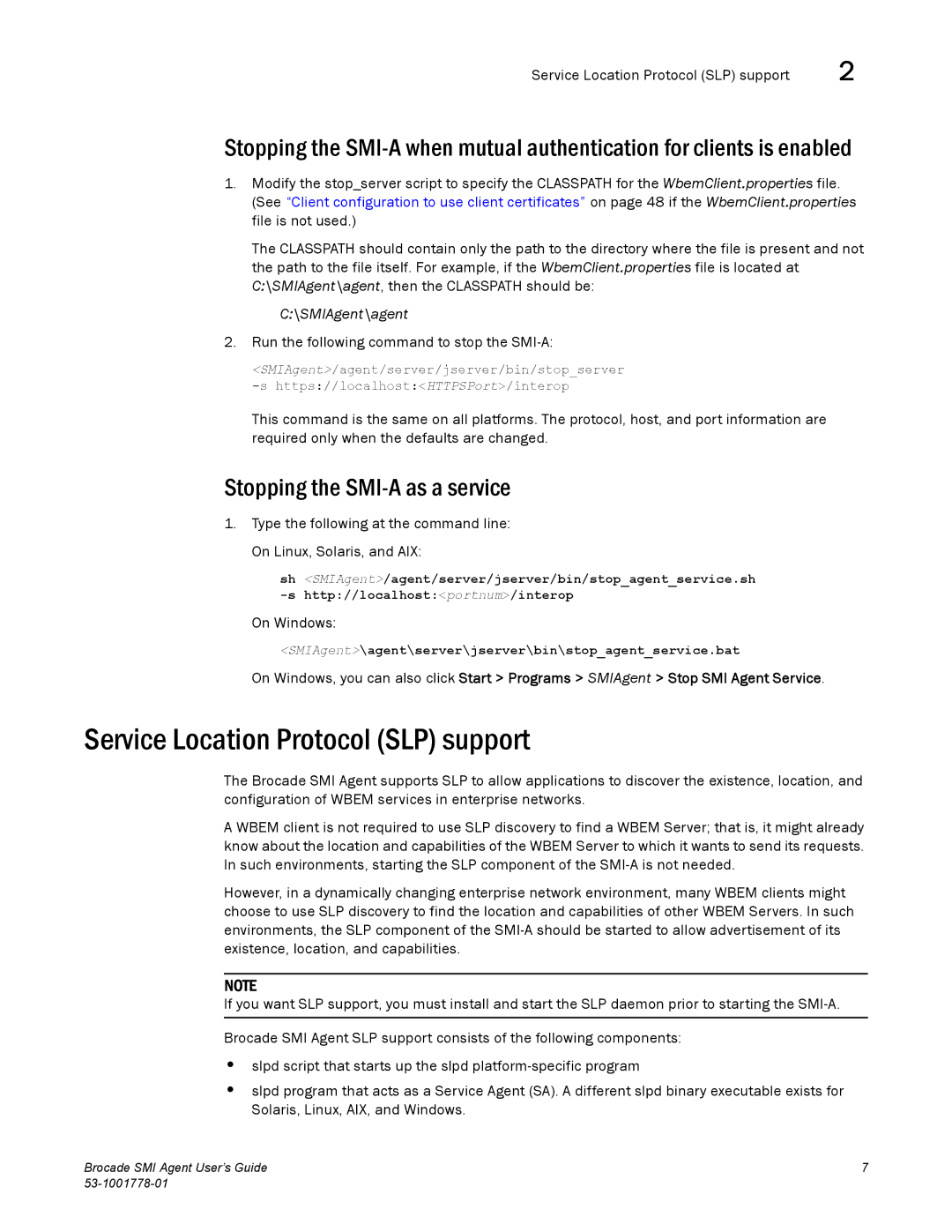Service Location Protocol (SLP) support | 2 |
Stopping the
1.Modify the stop_server script to specify the CLASSPATH for the WbemClient.properties file. (See “Client configuration to use client certificates” on page 48 if the WbemClient.properties file is not used.)
The CLASSPATH should contain only the path to the directory where the file is present and not the path to the file itself. For example, if the WbemClient.properties file is located at C:\SMIAgent\agent, then the CLASSPATH should be:
C:\SMIAgent\agent
2. Run the following command to stop the
<SMIAgent>/agent/server/jserver/bin/stop_server
This command is the same on all platforms. The protocol, host, and port information are required only when the defaults are changed.
Stopping the SMI-A as a service
1. Type the following at the command line: On Linux, Solaris, and AIX:
sh <SMIAgent>/agent/server/jserver/bin/stop_agent_service.sh
On Windows:
<SMIAgent>\agent\server\jserver\bin\stop_agent_service.bat
On Windows, you can also click Start > Programs > SMIAgent > Stop SMI Agent Service.
Service Location Protocol (SLP) support
The Brocade SMI Agent supports SLP to allow applications to discover the existence, location, and configuration of WBEM services in enterprise networks.
A WBEM client is not required to use SLP discovery to find a WBEM Server; that is, it might already know about the location and capabilities of the WBEM Server to which it wants to send its requests. In such environments, starting the SLP component of the
However, in a dynamically changing enterprise network environment, many WBEM clients might choose to use SLP discovery to find the location and capabilities of other WBEM Servers. In such environments, the SLP component of the
NOTE
If you want SLP support, you must install and start the SLP daemon prior to starting the
Brocade SMI Agent SLP support consists of the following components:
•slpd script that starts up the slpd
•slpd program that acts as a Service Agent (SA). A different slpd binary executable exists for Solaris, Linux, AIX, and Windows.
Brocade SMI Agent User’s Guide | 7 |
|
